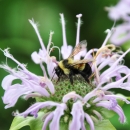Last updated 4/1/2025
In accordance with section 7(a)(2) of the Endangered Species Act (ESA), federal agencies must consult with the U.S. Fish and Wildlife Service (FWS) on any action that may affect species listed as endangered or threatened to ensure they do not jeopardize the species’ continued existence. We intend for this voluntary guidance to help FWS, action agencies, and applicants carry out efficient and effective 7(a)(2) consultations and to plan and implement actions that would conserve the species.
The suggestions and alternatives provided in this document are subject to continual improvement and modification. Agencies may use any approach or methodology that ensures compliance with ESA Section 7 Section 7
Section 7 Consultation
The Endangered Species Act (ESA) directs all Federal agencies to work to conserve endangered and threatened species and to use their authorities to further the purposes of the Act. Section 7 of the Act, called "Interagency Cooperation," is the mechanism by which Federal agencies ensure the actions they take, including those they fund or authorize, do not jeopardize the existence of any listed species.
Learn more about Section 7 and implementing regulations at 50 Code of Federal Regulations Part 402. We encourage and expect deviation from these recommendations whenever appropriate to respond to distinct or differing conditions within an action area action area
All areas to be affected directly or indirectly by the federal action and not merely the immediate area involved in the action.
Learn more about action area . We note that any use of mandatory language in this guidance refers to lawful obligations present in statute or regulation. This guidance does not bind agency personnel and does not create any new mandatory procedure or requirement for the public.




